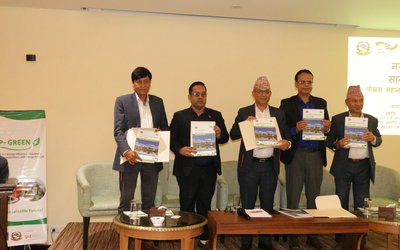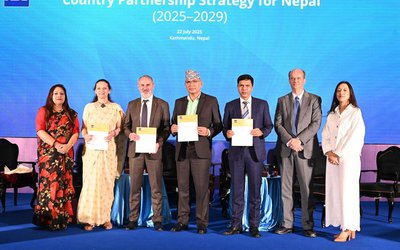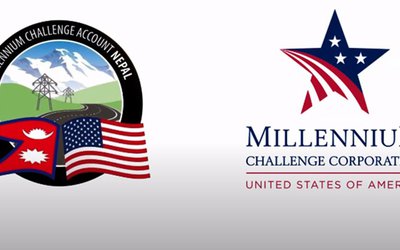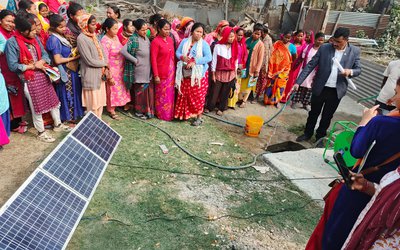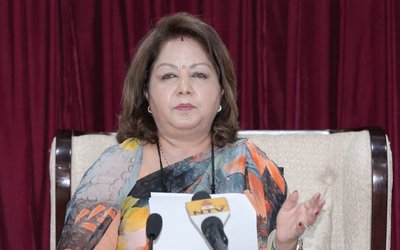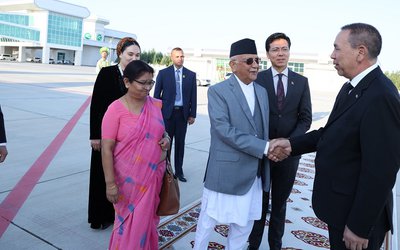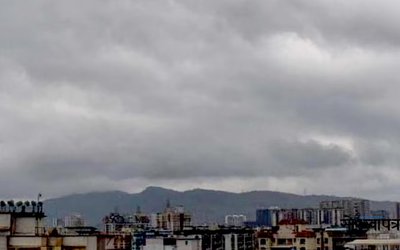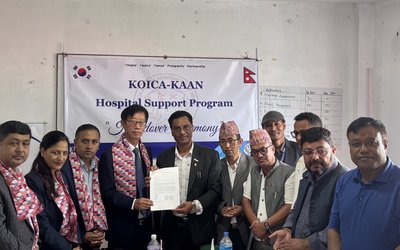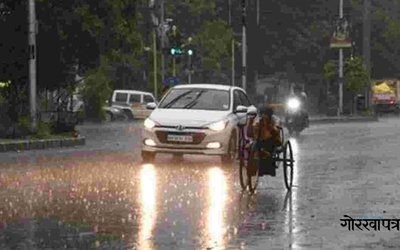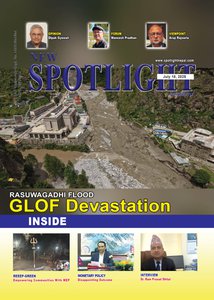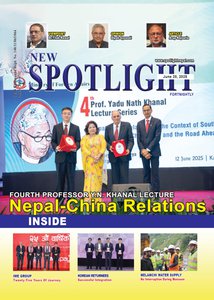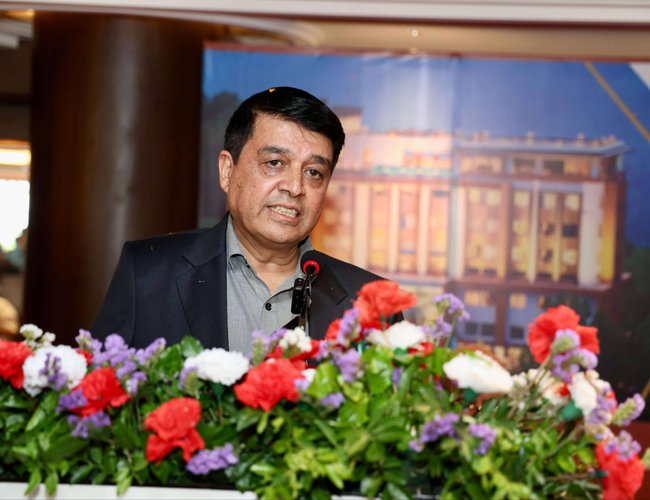
With the opening of this hotel operated by IME Hospitality from today, we have now brought into operation a total of five hotels and resorts. Just a few months ago, the Minister formally inaugurated the Ila Hotel in Baglung.
In addition, we are operating Chandragiri Resort in Chandragiri, Kathmandu, Hotel Le Himalaya in Lazimpat, and Lake Side Retreat on the lakeside of Pokhara.
We firmly believe that tourism is the primary foundation for the development and prosperity of the country. Accordingly, we have initiated projects to build hotels and resorts with cable cars in all seven provinces of the country as part of developing tourism infrastructure.
So far, cable cars have been constructed and are in operation in three provinces. With the operation of this hotel today, full-scale projects with hotels are now running in two locations. At the top station of the Lumbini Cable Car in Basantapur, the hotel construction process has begun. Similarly, in Kailali of the Far-Western region, the work on a hotel, resort, and cable car is progressing simultaneously. The cable car there will be operational within a year, followed shortly by the hotel and resort.
Likewise, the construction of a cable car is ongoing at Pathibhara in Taplejung.
There is a shortage of tourism infrastructure in the country. The average expenditure and length of stay of foreign tourists visiting Nepal are currently quite low and are on a declining trend. According to recent data we have, foreign tourists stay in Nepal for an average of 12 days and spend less than 50 dollars per day.
We must build larger infrastructures that attract tourists and encourage longer stays and greater spending. Tourists come to Nepal to experience its culture, art, natural beauty, and the unique, mystical geography and environment of the country.
Hence, I would like to suggest that we must develop such tourism infrastructure. We firmly believe that the quicker the government facilitates and adopts a partnership model with the private sector in these initiatives, the faster the country will develop.
We possess extraordinary natural heritage, which is a blessing we have received. Therefore, it is no exaggeration to say that there are countless possibilities in the fields of tourism, nature, and the environment. We must combine our vision with determination and add technology and capital to it. I am confident that doing so will truly lead to miracles.
We have time and again proven that the private sector in this country is capable of bringing about miraculous change and development.
Given a conducive environment, the private sector can make large-scale investments and support the government in achieving development, employment generation, and economic growth. This is our firm belief.
I believe that local governments across the country should compete to attract investment into their respective regions by capitalizing on the confidence and capacity of the private sector. However, what we often see is just verbal calls for investment — without meaningful action. That is no longer enough. It is our view that the private sector must be treated as a genuine partner, and real facilitation should be provided through concrete and practical policies.
All local governments need to create long-term structures and frameworks to support such partnerships. I would like to reiterate: only through policy reform and favorable arrangements can we create an investment-friendly environment that attracts both domestic and foreign investment.
Only by investing in tourism infrastructure can we achieve our targets for tourist arrivals.
We can extend the duration of tourists’ stay,
Earn more foreign currency,
Create more jobs,
And generate more revenue.
Compared to other service sectors, tourism creates significantly more employment and also contributes more in terms of government revenue. It will certainly help uplift people’s living standards, reduce poverty, and lead to the kind of economic development and prosperity we all aspire to.
After all, aren’t these the expectations we all share?
If all of this can be achieved with minor policy changes and encouragement from the government, then why not do it? The government can reap the rewards — the "dividends of development" — without even making direct investments. That’s why I have often referred to the government as a “zero-investment partner.”
In my role as a representative of the national private sector, I would like to make this earnest request and offer these suggestions to the federal and local governments.
The region where Chitwan, Tanahun, and Nawalpur converge is a sacred land of religious and cultural importance in Nepal. Right before us stands the Maulakali Temple, which carries a history of nearly 450 years. To our right is Devghat — a revered pilgrimage site for followers of the Vedic Sanatan Dharma.
I find myself unable to do justice in describing the spiritual significance of nearby sacred sites such as Narayani, Devghat, and Triveni — lands of divine and meditative heritage. It is beyond the capacity of my words.
Still, I can express my hope that the cable car and this new tourism infrastructure will help bring the historical glory and spiritual significance of our heritage to all Nepalis.
Because the more we make these historically and spiritually significant sites accessible to people through proper infrastructure, the more their value and importance will be recognized and spread widely.
I believe that no matter how many tourism infrastructures we build in this sacred land of spiritual, cultural, and historical significance, it will never be enough. That is why we have made efforts to develop this area as a destination of historical and touristic convergence in Nepal — and today’s achievement is a result of that very effort.
We are committed to preserving the environmental sensitivity of this naturally beautiful land, while also working to uplift the living standards of local residents and contribute to national prosperity through tourism development.
I believe such infrastructures are shared assets of the nation and its people. The model we have proposed is to develop this structure — built as a jewel of Nawalpur — as a property that belongs to the local community, and we are ensuring maximum participation from them.
The Chandragiri project, which was our initial attempt at a cable car system, has already become a top tourism destination in a short time — a fact we continually hear from the visitors who go there. I need not elaborate on how much it has contributed to the national economy and uplifted the local population — it’s well known to all.
I extend my sincere thanks to the federal, provincial, and local governments, political parties, local residents, the temple management committee, forest user groups, and all other stakeholders who supported us in completing the construction of this project that has been inaugurated today.
As a resident of Gandaki Province myself, I am deeply honored and happy to be able to serve my sacred birthplace in this way.
As I conclude, I find myself humming the lines of a Nepali song that says, "Wherever there are stones, the gods reside.” I believe every person should have easy access to each of those sacred stones where the gods dwell — and for that, there must be some form of tourism infrastructure in every such place.
And so, just like that song, I too feel inspired to hum the thought:
"In every hill, there lies a possibility for tourism."
Chandra Prasad Dhakal is the chairman of IME Group and President of Federation of Nepalese Chamber of Commerce And Industries (FNCCI). Excerpts of his statement delivered at the Inauguration Ceremony of Ila Hotel, Maulakali, and Nawalpur.
।
- Nepal Has A Significant Opportunity To Grow Through Foreign Direct Investment (FDI)
- Apr 11, 2025
- Obstruction To The Pathibhara Cable Car Project Could Harm Investment And Business In Nepal
- Mar 07, 2025
- Cable Car Enhances Identity And Living Standards Of Citizens
- Feb 08, 2025
- IME Group Is Dedicated To Investing In The Prosperity And Development Of Nepal
- Dec 29, 2024
- Nepal's Hospitality Industry Is Ready To Welcome Chinese Tourists
- Sep 25, 2023


